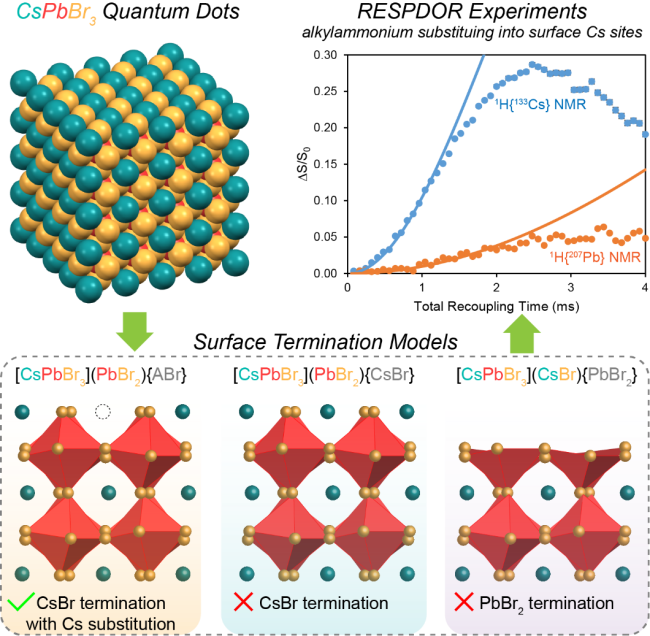
Cesium lead halide perovskite quantum dots (QDs) have gained significant attention as next-generation optoelectronic materials; however, their properties are highly dependent on their surface chemistry. The surfaces of cuboidal CsPbBr3 QDs have been intensively studied by both theoretical and experimental techniques, but fundamental questions still remain about the atomic termination of the QDs. Additionally, the surface binding sites and modes of ligands at the surface remain unproven.
Herein, we demonstrate that solid-state NMR spectroscopy allows the unambiguous assignment of organic surface ligands via 1H, 13C, and 31P NMR. Surface selective 133Cs solid-state NMR spectra show the presence of an additional 133Cs NMR signal with a unique chemical shift that is attributed to Cs atoms terminating the surface of the particle and which are likely coordinated by carboxylate ligands. 1H{133Cs} and 1H{207Pb} dipolar dephasing experiments that measure the distance between the surface ammonium ligands and Cs and Pb atoms were performed. Comparison of calculated and experimental dipolar dephasing curves indicates the particles are CsBr terminated (not PbBr2 terminated) with alkylammonium ligands substituting into some surface Cs sites. More generally, this study demonstrates the utility of high-resolution solid-state NMR spectroscopy for studying ligand binding and the surface structure of nanomaterials.
Y. Chen, S.R. Smock, A.H. Flintgruber, F.A. Perras, R.L. Brutchey, A.J. Rossini. The surface termination of CsPbBr3 perovskite quantum dots determined by solid-state NMR spectroscopy, J. Am. Chem. Soc., 142, 6117-6127, 2020; DOI: 10.1021/jacs.9b13396.
